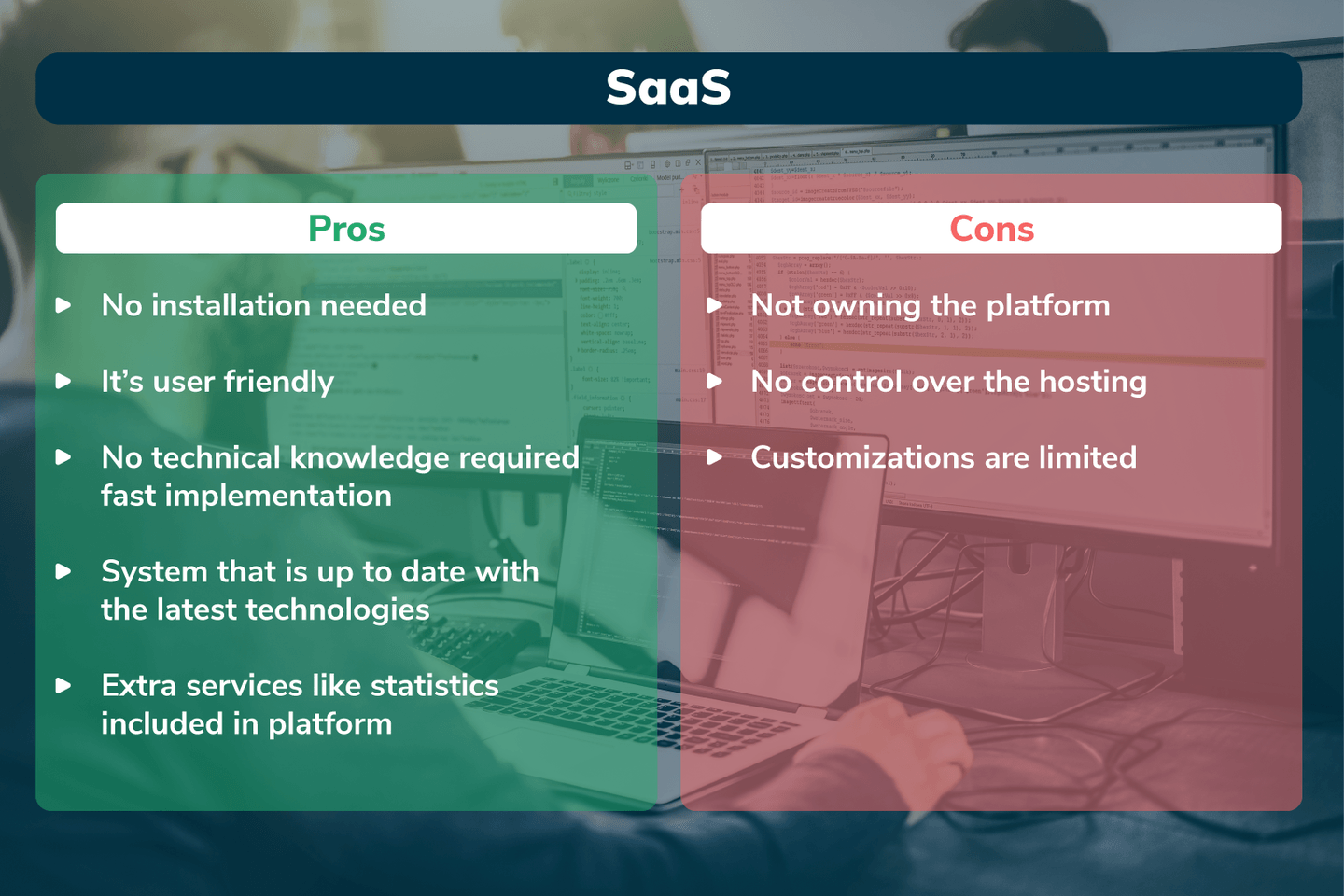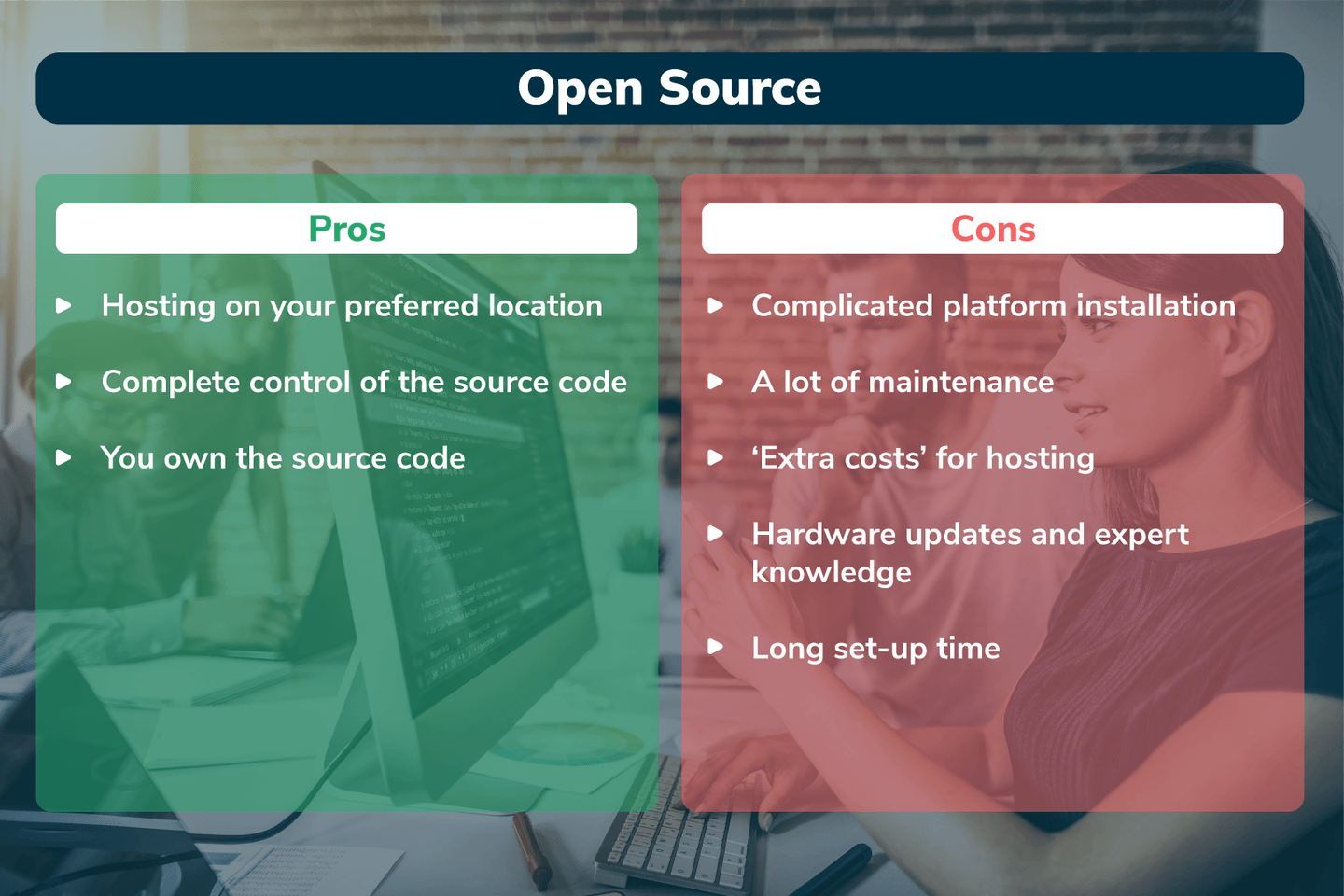When you’d like to buy an online interactive video platform, you’ll have to choose whether you are going to use a SaaS solution or an Open Source solution. What are the pros and cons of both options? And what are the differences between them? In this blog, we will help you decide!
So. What are the options?
A SaaS solution is a platform that is hosted by the supplier of that platform. Often, you’ll pay a subscription fee or you’ll pay a certain amount per created product, and you can then use all available services on that platform. However, you don’t own the software. You own the rights of that subscription to use the software, or you own the product created with the software, or both. Spotify and hihaho are examples of SaaS solutions.
With an Open Source platform, the source code is accessible to everyone and the software is free of charge. If you download the source code, you can change it yourself (or ask you development team to do it) and theDas changed code is then all yours. The source code and using the software are both free of charge. However, in most cases, you’ll have to pay for hosting, premium features and additional support. WordPress is an example of an Open Source platform.
A SaaS platform
So if you decide to go for a SaaS solution, you pay to use the platform. The supplier of the platform takes care of the support, hosting, maintenance and further development of the platform. Most SaaS suppliers have a dedicated team of geniuses working on their platform non-stop. They keep the software up to date, make sure that everything works on all devices, build cool features, take care of the stability of the product, and a lot more.
Because the platform is supported by the right people, using it is a matter of ‘click and go!’. No configuration, no installation, no security and privacy checks. Everything is already covered and you are good to go after creating an account.
Most platforms also offer some customization options. You can’t change the source code, but you can add your own custom skin, for example. Most SaaS companies listen to their customers and value their input on new features.

An Open Source platform
The benefit of an Open Source platform is that you have access to the source code in full. Just download the source code, make as many changes as you want and then perform a local install. You are fully in control of the platform and you’re responsible for the configuration, hosting and security of it. This can be an advantage, but also a disadvantage. It takes a lot of time and effort to get the platform up and running, keep it up to date and keep it fast and secure. The source code is free, but the platform knowledge is not. You need to invest in this knowledge or hire an expert.

I hope the advantages of both platforms are clear now and that you have enough information to make the best choice for your organization. If you need any help or advice choosing between these two, feel free to contact us via email (info@hihaho.com) or phone (+31 (0)592-377285).





